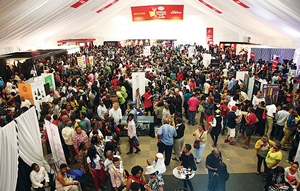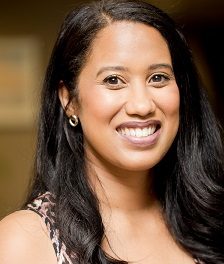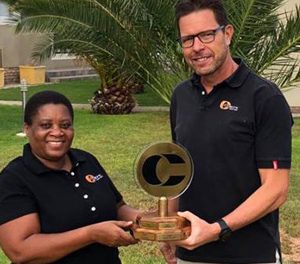
A toast to new black middle class

From Nigeria to Kenya to Cape Town and back across Africa a rising middle class provides the momentum for a wave of investment in lifestyle infrastructure.
Within a year Cooper had found a partner, Mnikelo Mangciphu, with whom she organized the first-ever Soweto Wine Festival. It has now become a popular annual event. She also owns a winery and business is booming, but she believes that better days are still ahead as she targets a rising black middle-class market.
Growing demographic
But who exactly is in the middle class? Although the African Development Bank describes as middle class in a developing economy anyone earning more than US$2 per day, a study by John Simpson, director of the University of Cape Town’s Unilever Institute of Strategic Marketing, defines middle-class as those who earn between US$1550 and US$4800 per month or who meet certain criteria, for instance, having a white-collar job and owning a car.
In a recent study, Four Million and Rising, Simpson indicates that currently in South Africa 40% of black professionals work in the civil service, compared to 13% of whites. This has led to a rise of income levels in black families, which in turn has led to increased consumption. The study found that between 2004 and 2012, the number of black middle-class families who owned a DVD player increased from 30% to 63%; the number with computers at home increased from 19% to 45%; and of those owning microwaves from 60% to 92%.
Nicholas Nkosi, a manager with Standard Bank, added his voice to the excitement about a new and financially empowered black middle class. More blacks are buying homes than before, he told Africa Renewal in an interview. In addition, his bank’s 2013 report shows that car sales to blacks increased by 19% between 2011 and 2012, compared to an increase of 7% for white customers during the same period.
Lyn Foxcroft, a business consultant who studied wine consumption among emerging consumers, wrote, “Of the 8.3 million adults classified as middle class in 2012, 51% are black, 34% white…. This is a dramatic shift from the 2004 proportions: white 52%, black 32%”
Economy’s engine
Simpson said available data indicates an expansion of the black middle class, and he sees this demographic as the engine of the economy because of its strong purchasing power and contribution to the fiscus through taxes.
Several factors have helped swell the ranks of South Africa’s black middle class, including credit availability, education, the government’s Black Economic Empowerment (BEE) programme and general economic growth, which has led to more job creation, said Simpson.
Entrepreneurs such as Cooper continue to find themselves faced with many opportunities. She reckons that “for the next 20 to 30 years, this black middle-class market is going to expand further.”
Simpson’s study shows that about 70% of blacks in the middle class feel increasing pressure to support less fortunate dependents. This pressure is captured in the award-winning 2011 documentary Forerunners, which portrays the struggles of four black people striving to find balance in their new lives and cope with the tensions that result from attempting to fulfill enormous family responsibilities.
Fast food invasion
Increased spending power by the black middle class has caused an influx of fast-food outlets and, from that, new health challenges, such as obesity. By June 2013, fast-food giant McDonald’s operated 185 restaurants in South Africa, and it is set to increase the number to 200. Burger King, another fast-food company, opened its first restaurant in Cape Town last year and expects to open more in the future.











































